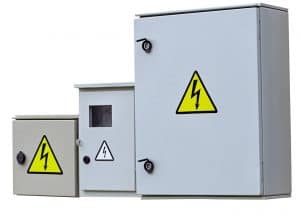 For several decades, heat exchangers have provided myriad benefits to designers of innovative technologies and the companies that utilize them. For example, their innovative heat transfer methods minimize an application’s need for energy. Also, the cooling units’ optimized designs make them appropriate and customizable to virtually any electrical thermal management application. For applications that require special considerations, such as electrical enclosures designed according to NEMA standards, heat exchangers have also been of particular benefit. They not only transfer waste heat rapidly, efficiently, and at low cost, but also provide a high level of ingress protection and other advantages necessary for enclosures to meet various NEMA standards.
For several decades, heat exchangers have provided myriad benefits to designers of innovative technologies and the companies that utilize them. For example, their innovative heat transfer methods minimize an application’s need for energy. Also, the cooling units’ optimized designs make them appropriate and customizable to virtually any electrical thermal management application. For applications that require special considerations, such as electrical enclosures designed according to NEMA standards, heat exchangers have also been of particular benefit. They not only transfer waste heat rapidly, efficiently, and at low cost, but also provide a high level of ingress protection and other advantages necessary for enclosures to meet various NEMA standards.
Taking NEMA standards into consideration
NEMA, or the National Electrical Manufacturers Association, sets forth standards that help guide the building and implementation of electrical enclosures in a variety of different conditions. Their goal is to optimize both safety and productivity in applications that require the use of electrical control panels and other enclosures. The standards put forth call for varying levels of protective measures, such as high levels of protection against environmental hazards and other measures designed to maximize user safety. While companies weigh the costs of their thermal management solutions, meeting appropriate NEMA standards is one of their most important considerations.
Using heat exchangers to optimize cooling
In many different applications, heat exchangers have helped streamline the processes of electrical cooling and eliminate companies’ need for more costly thermal solutions. That’s because they’re designed to continuously transfer electrical waste heat, often within a closed loop, and without having to rely on chilled or compressed air to prevent overheating. The fluid inside of a heat exchanger absorbs the heat, then flows through the heat exchanger to release somewhere safe, away from sensitive components. As heat exchangers have advanced, their innovative heat transfer methods have been adapted to meet the increasingly more complex thermal management needs of most modern applications – including meeting strict NEMA safety standards.
Why they’re ideal for NEMA enclosures
There are several different reasons why heat exchangers are preferable thermal management solutions for NEMA class enclosures. For example, besides saving space and energy, transferring heat is a much more easily controllable process. It can be accomplished within an appropriate heat exchanger that doesn’t require complicated mechanical parts, or the constant refilling of cooling fluid. The solutions are often attached using high-quality gaskets and neoprene seals to ensure optimal levels of protection, and their looped design helps minimize risks to the cooling unit or electrical enclosure.
For more information about the advantages of using heat exchangers to cool NEMA enclosures, call Noren Thermal Solutions in Taylor, TX, at 866-936-6736.







